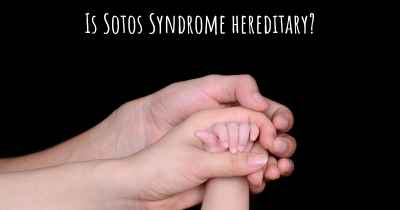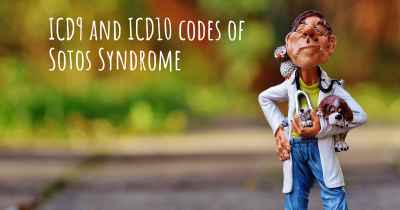What is the history of Sotos Syndrome?
When was Sotos Syndrome discovered? What is the story of this discovery? Was it coincidence or not?

Sotos syndrome, also known as cerebral gigantism, is a rare genetic disorder characterized by excessive physical growth during the early years of life. It was first described by Juan Sotos, a pediatrician, in 1964. The syndrome affects approximately 1 in every 14,000 to 50,000 individuals, with males being more commonly affected than females.
The discovery of Sotos syndrome:
In 1964, Dr. Juan Sotos encountered a young patient who exhibited remarkable physical characteristics, including accelerated growth, a large head, and distinctive facial features. Intrigued by this unusual presentation, Dr. Sotos conducted further investigations and identified a pattern of symptoms that were consistently present in other patients. He published his findings, coining the term "cerebral gigantism" to describe the condition. Over time, the syndrome became widely known as Sotos syndrome in honor of Dr. Sotos' significant contribution to its understanding.
Clinical features and genetic cause:
Sotos syndrome is primarily characterized by excessive growth during infancy and childhood, resulting in a taller stature than average. Children with Sotos syndrome often have a large head (macrocephaly) and distinctive facial features, including a prominent forehead, widely spaced eyes, and a pointed chin. They may also experience developmental delays, learning disabilities, and speech impairments. Other common features include low muscle tone (hypotonia), coordination difficulties, and behavioral issues.
The genetic cause of Sotos syndrome was discovered in the late 1990s. It is primarily caused by mutations or deletions in the NSD1 gene, located on chromosome 5. The NSD1 gene provides instructions for producing a protein involved in the regulation of gene activity during development. Mutations in this gene disrupt normal growth and development, leading to the characteristic features of Sotos syndrome.
Diagnosis and management:
Diagnosing Sotos syndrome can be challenging due to its variable presentation and overlap with other genetic disorders. However, clinical evaluation, including physical examination and assessment of developmental milestones, can aid in the diagnosis. Genetic testing, specifically analyzing the NSD1 gene, can confirm the presence of mutations or deletions.
While there is no cure for Sotos syndrome, management focuses on addressing the individual's specific needs and symptoms. Early intervention programs, including physical therapy, occupational therapy, and speech therapy, can help improve motor skills, coordination, and communication abilities. Educational support tailored to the child's learning style and potential is also crucial.
Research and ongoing studies:
Since its initial discovery, research on Sotos syndrome has expanded our understanding of the condition. Scientists continue to investigate the underlying genetic mechanisms and the role of the NSD1 gene in normal growth and development. Ongoing studies aim to identify additional genes associated with Sotos syndrome and explore potential therapeutic interventions.
Support and advocacy:
Support groups and organizations play a vital role in providing resources, information, and emotional support to individuals and families affected by Sotos syndrome. These groups help raise awareness, promote research, and advocate for improved healthcare services and educational support for individuals with the condition.
In conclusion, Sotos syndrome is a rare genetic disorder characterized by excessive physical growth, distinctive facial features, and developmental delays. Dr. Juan Sotos first described the syndrome in 1964, and it has since been named after him. The identification of the NSD1 gene as the primary genetic cause has furthered our understanding of the condition. Although there is no cure, early intervention and tailored support can significantly improve the quality of life for individuals with Sotos syndrome.
Posted Dec 24, 2020 by Sui 450








